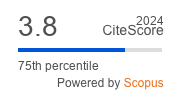Article | Open Access
Infrastructure Development and Waterfront Transformations: Physical and Intangible Borders in Haifa Port City
| Views: | 4136 | | | Downloads: | 2479 |
Abstract: Constructed on its natural bay as a fortified Muslim town in the late 18th century, Haifa’s port city transformed into a modern cosmopolitan port city in the second half of the 19th century. Significant technological, administrative, and social changes made Haifa into the transportation and economic hub of northern Palestine: Its harbor, the first in the region, became a gate to the east for commodities, pilgrimages, and ideas. British imperialism enlarged it with landfill areas and added an industrial function, constructing refineries and a connecting pipeline with Iraq. Haifa port served as the main entry port for immigration and goods for the newly founded Israeli state. Privatization and neo-liberalization transformed it from national port to international corporate hub, reshaping both port and city. Individual entrepreneurs, local governments, and imperial actions shaped and reshaped the landscape; perforating new access points, creating porous borders, and a new socioeconomic sphere. This process persisted through the Late Ottoman era, the British Mandate, and the Israeli state. From the first Ottoman landfills to the sizeable British harbor of 1933, the market economy led urban planning of Haifa’s waterfront and its adjacent railroad to the current Chinese petrol-harbor project. What were the city’s tangible and intangible borders? How did these changes, influenced by local and foreign agendas, unfold? Tapping into built-environment evidence; archival documents (architectural drawings, plans, maps, and photographs); and multidisciplinary academic literature to examine Haifa’s urban landscape transformation, this article studies the history of Haifa’s planned urban landscape—focusing on transformations to the port and waterfront to adjust to new technologies, capital markets, and political needs. We thus explore Haifa port history as a history of porosity and intangibility—rather than the accepted history of European modernization—building upon theoretical literature on global networks and urban form, regional dynamics of port cities, and tangible and intangible border landscapes.
Keywords: Haifa; infrastructure development; Israel; modernity; porosity; port city
Published:
© Keren Ben Hilell, Yael Allweil. This is an open access article distributed under the terms of the Creative Commons Attribution 4.0 license (http://creativecommons.org/licenses/by/4.0), which permits any use, distribution, and reproduction of the work without further permission provided the original author(s) and source are credited.


